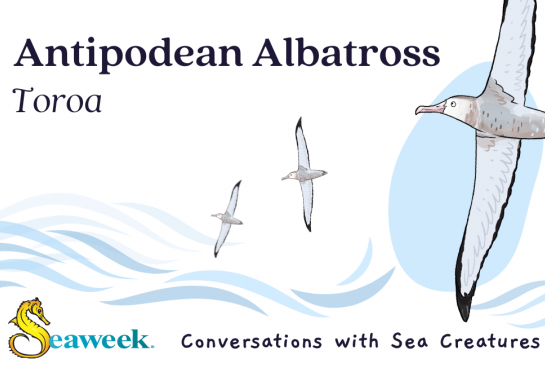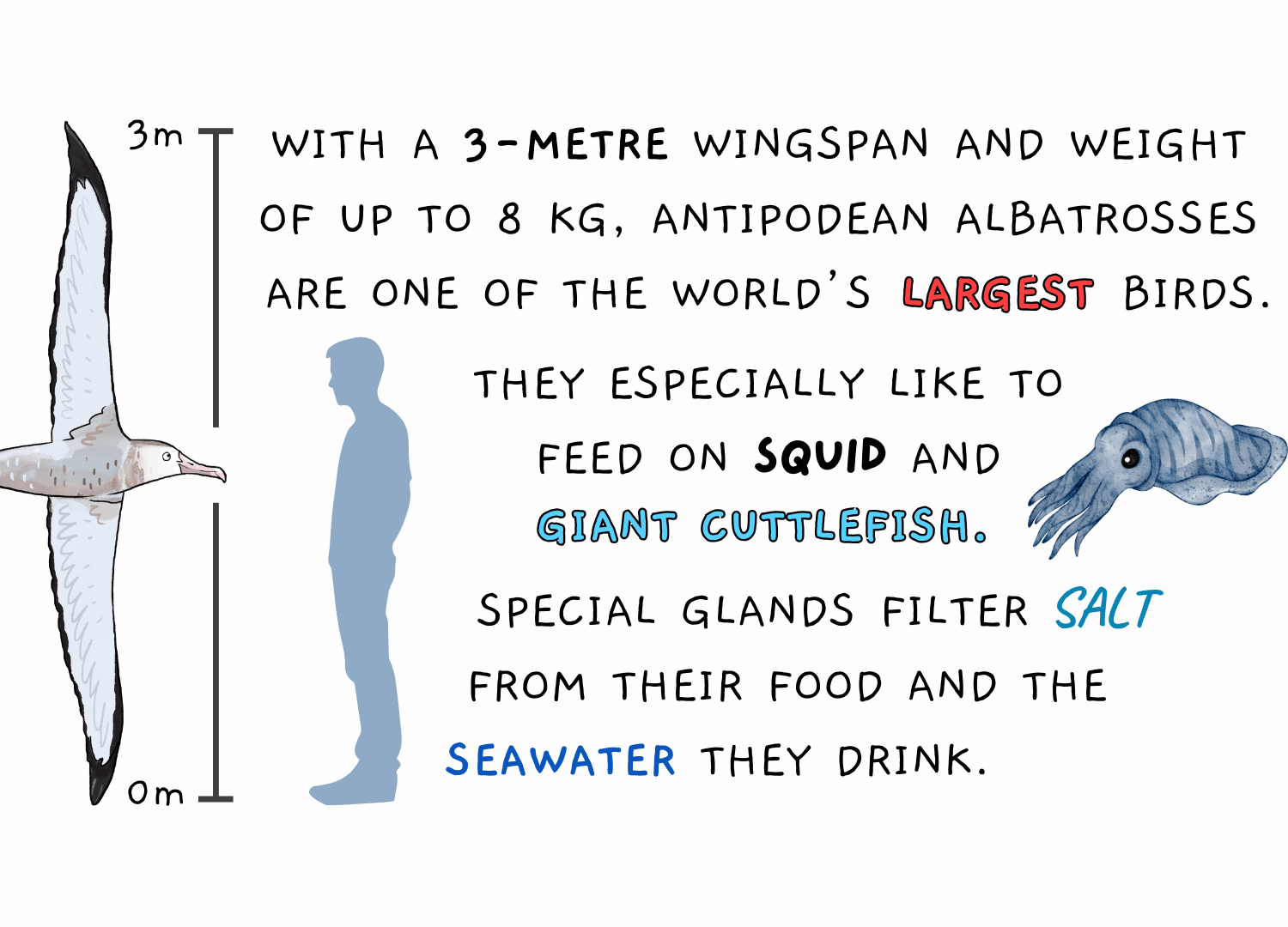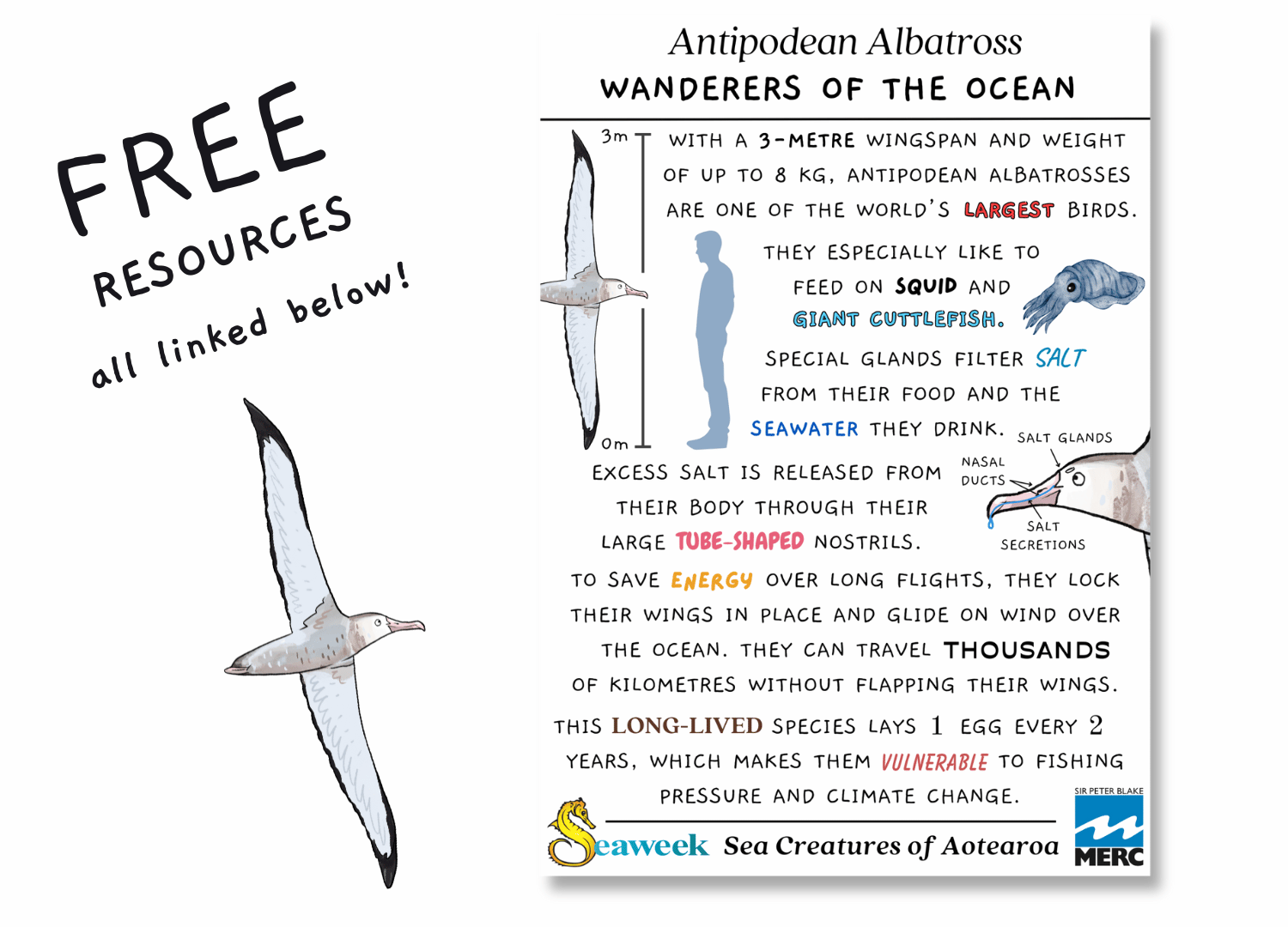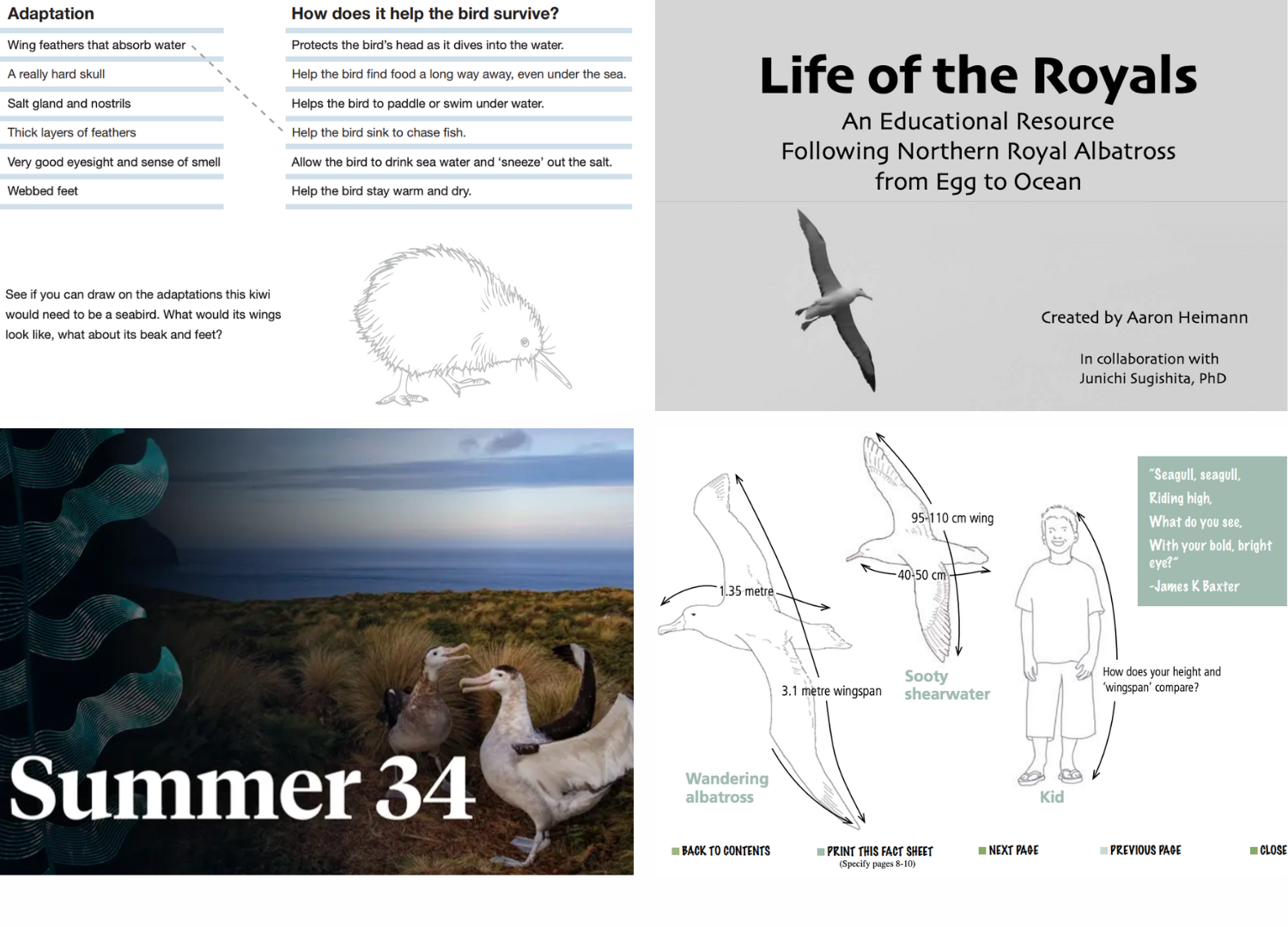
Q: Can you tell us a little about yourself?
Sure thing! I’m the Antipodean Albatross, one of the 11 albatross species found in New Zealand and one of the largest of all albatross worldwide! I am endemic to New Zealand and breed mainly on Antipodes Island, 800km southeast of Dunedin, with some pairs also breeding on Campbell Island and the Chatham Islands, but I spend 85% of my life foraging over the open ocean.
What do albatrosses eat?
At sea, I forage over the shelf edge and deep water around the Chatham Rise but can travel anywhere from Chile to Australia’s southeast coast in search of food. My diet consists predominantly of squid, giant cuttlefish, and various fish species. We also have special salt glands above our eyes that filter excess salt from the seawater we drink as well as our salty diet, and the salt is expelled out of our large tube-shaped nostrils!

Q: How do you manage to travel so far at sea?
I have a wingspan of 3 metres and can lock my wings in place to help me save energy while flying over the open ocean, which is super helpful since I weigh over 8kg! I can travel thousands of kilometres without flapping my wings by using the breeze over the ocean surface!
I do this by flying into the wind to soar upwards and then turn and glide down with the wind to gain speed, kind of in a zig-zag pattern. This flight style is called dynamic soaring and takes so little energy that my heart rate while flying is nearly as low as if I were resting on the water’s surface.
Q. How often do you return to land?
Not very often! Raising a chick is a huge energy investment for us, so we only lay one egg every two years. We return to the same nesting sites each breeding season and, like other albatrosses, mate for life.
Q. How long does it take to raise a chick?
It’s a year-long commitment from egg-laying to when our chick is ready to depart for the open ocean. Both parents take turns incubating the egg, sometimes for weeks at a time. Once fledglings leave, they’re on their own and will be at sea for at least the next three years before returning to land. Even then, they won’t reach maturity until they’re about 7 years old.
Q. What are the biggest threats that you face?
Unfortunately, we are vulnerable to becoming bycatch of longline fisheries and changing ocean conditions with climate change which makes it harder for us to find enough food for ourselves and our chicks.
Thanks to the Royal Albatross Centre for collaborating with us to produce this interview and creature card with the most current information they have!

Download the Antipodean Albatross Card to print & display
Find more creature cards & other formats in this Google Drive folder.
Additional Learning Resources:
Southern Seabird Trust Activity Book
Life of the Royals Resource (Page 26)
Voice of Tangaroa Episode
Southern Seabird Trust Fact Sheet
